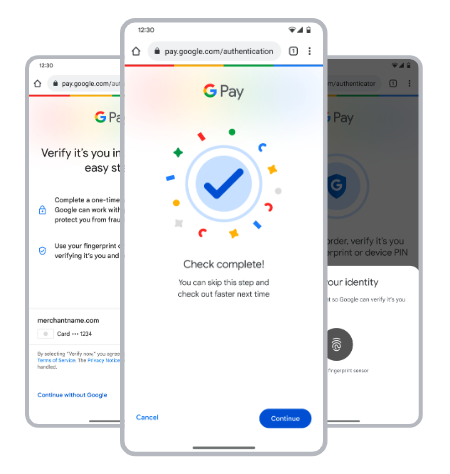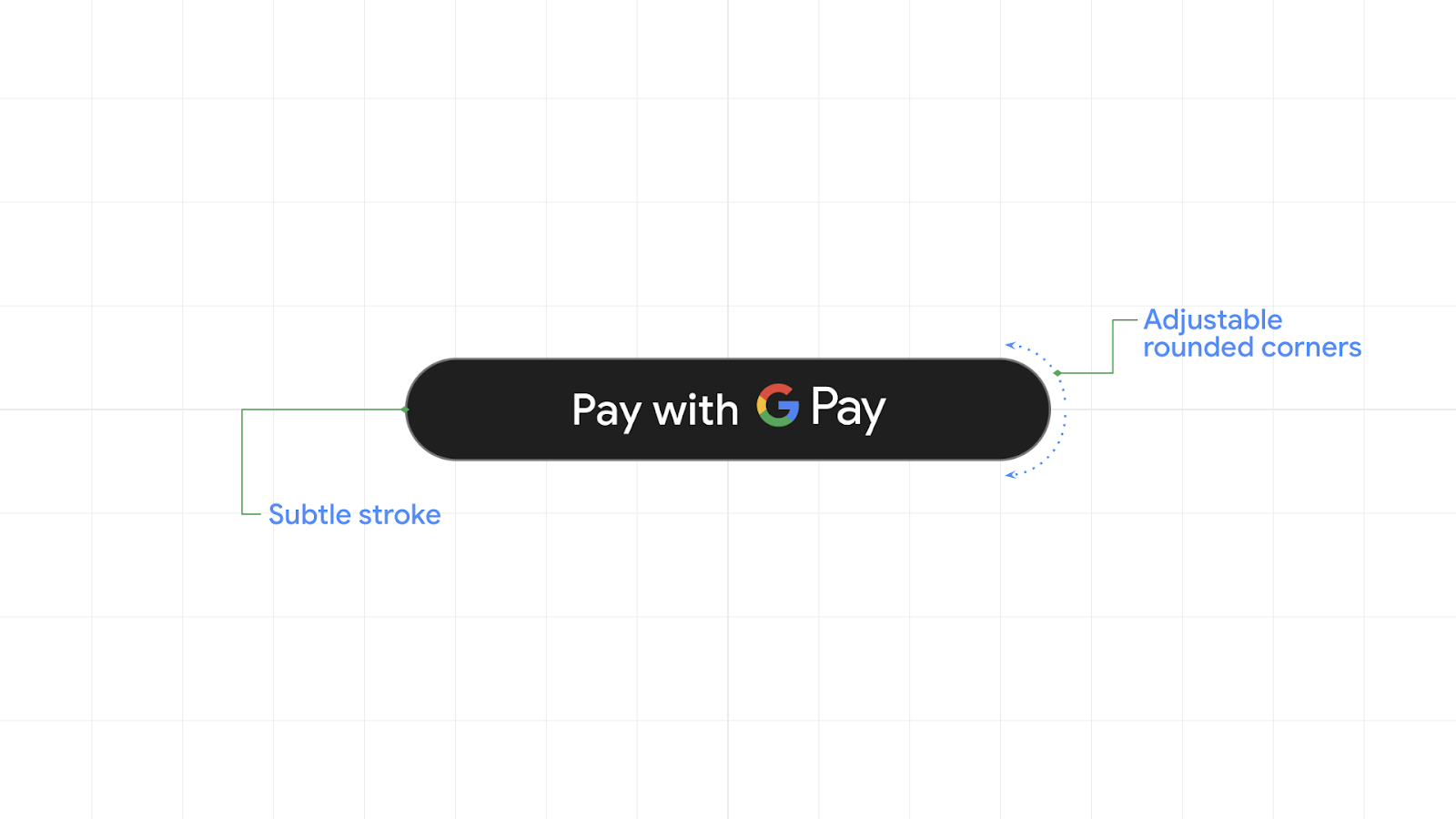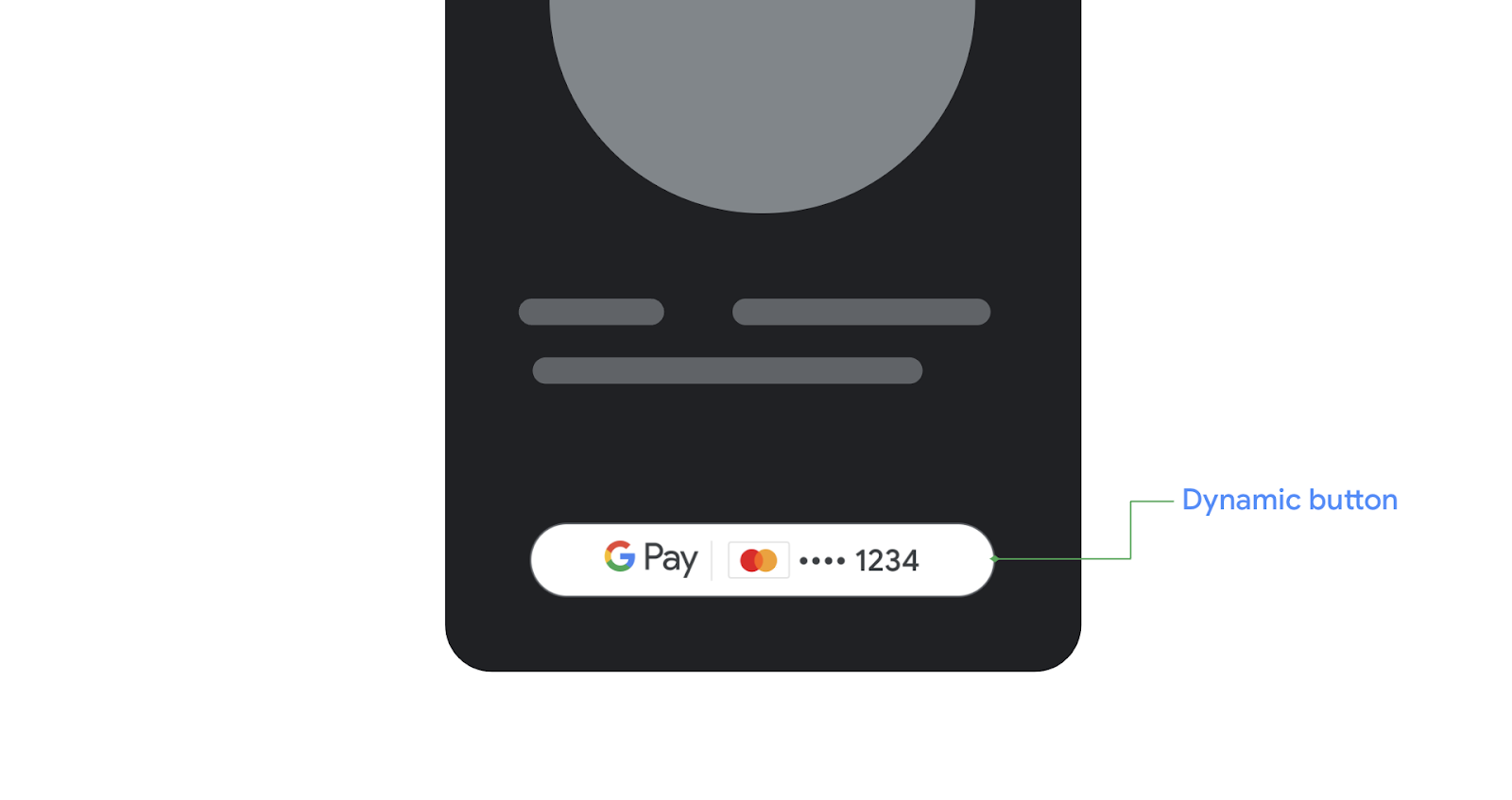
During Google I/O 2023, we shared some of the new features we’re adding to Google Pay and discussed how you can use them to simplify and strengthen your integrations, and add value to your customers making payments in your application or website.
Read on for a summary of what we covered during the event, or check out the recording of our session on YouTube: What's new in Google Pay and Google Wallet.
Google Pay is expanding its zero fraud liability protection on Android devices for eligible transactions leveraging leading payment network security capabilities. Before today, online payments made with a Mastercard were guaranteed by this protection. Today, we are announcing that we are expanding this benefit by rolling out merchant liability protection to eligible Visa online transactions that are made using Google Pay.
In addition, we're making it easy to verify and add forms of payments to Google Pay. As just one example, Google Pay has added support for card authentication both before and after a payment transaction. Google Pay users are now able to verify their saved card via an OTP code or their banking app which creates a device-bound token that supports secure and seamless transactions both online and offline.
As part of our mission to help you reduce fraud and improve authorization rates without increasing user friction, we're actively working on a new service — Secure Payment Authentication, a service built to help with risk and compliance based authentication needs. This service can be used for eligible payment transactions that require additional verification, and use secure and high performing device bound tokens to meet two-factor authentication.
We are using this opportunity to engage with businesses like you as part of an early access program, to understand how it can help you boost authorization performance. If fraud is a challenge for your business today, contact us to tailor your authentication strategy with Secure Payment Authentication.

We are giving the Google Pay button a fresh new look, applying the latest Material 3 design principles. The new Google Pay button comes in two versions that make it look great on both dark and light themed applications.

We're also introducing a new button view that simplifies the integration on Android. This view lets you configure properties like the button theme and corner radius directly in your XML layout. The new button API is available today in beta. Check out the updated tutorial for Android to start using the new button view today.
Later this quarter, you’ll be able to configure the new button view for Android to show your users additional information about the last card they used to complete a payment with Google Pay.

We are introducing PSP test cards, an upgrade to Google Pay’s test suite that lets you use test cards from your favorite payment processors to build end-to-end test scenarios. With this upgrade, you’ll now see specific test cards from your processor populate in Google Pay’s payment sheet, enabling additional testing strategies, both manual and automated.

This upgrade also supports test automation, so you can write end-to-end UI tests using familiar tools like UIAutomator and Espresso on Android, and include them in your CI/CD flows to further strengthen your checkout experiences. The new generation of Google Pay’s test suite is currently in beta, with web support coming later this year.
Last year we introduced virtual cards on Android and Chrome. Since then, we’ve seen great adoption, providing secure and frictionless online checkout experiences for millions of users. Customers using virtual cards have enjoyed faster checkouts, reported less fraudulent spend, and made online transactions that were declined less often.
Autofill is receiving visual improvements to reduce checkout friction, and will soon let your customers complete payment flows using bank accounts in Europe. For developers using autofill, we are introducing recommendations in Chrome DevTools to help you improve checkout performance. We are also improving autofill to better fill forms across frames, helping you facilitate payments more securely.
Check out the Google I/O keynote for Google Pay and Google Wallet to learn more.
We are determined to grow the number of verified forms of payment across the Google ecosystem, and continue to push for simple, helpful, and secure online payments, offering you a way to empower other businesses, and accelerate that change for consumers.
Later this quarter, you’ll be able to configure the new button view in your Android applications, to show your users additional information about the last card they used to complete a payment with Google Pay. We are also working on bringing the same customization capabilities announced for Android to your websites later this year.
Take a look at the documentation to start integrating Google Pay today.
Learn more about the integration by taking a look at our sample source application in GitHub.
When you are ready, head over to the Google Pay & Wallet console and submit your integration for production access.